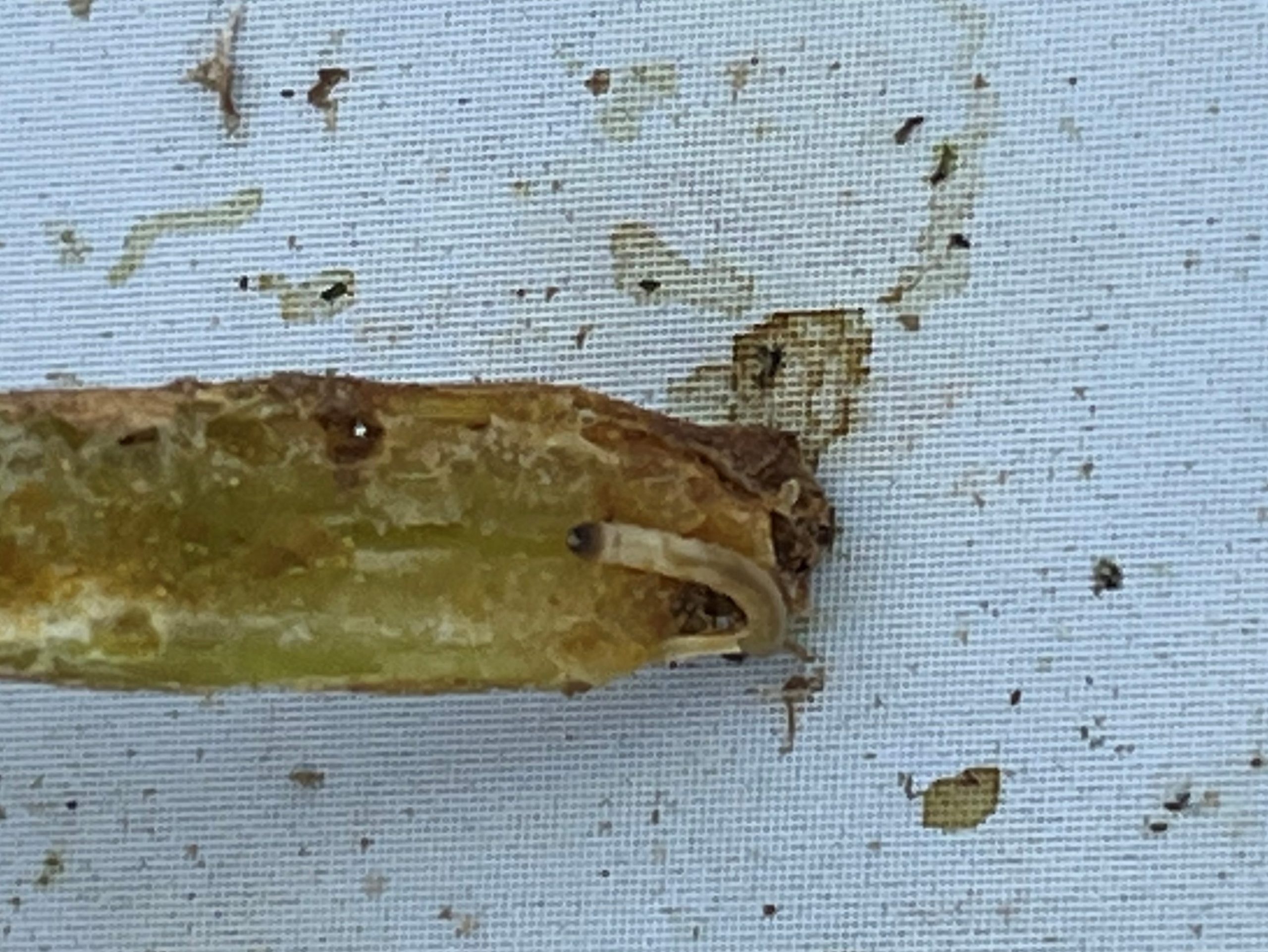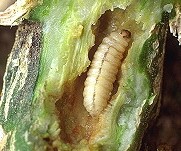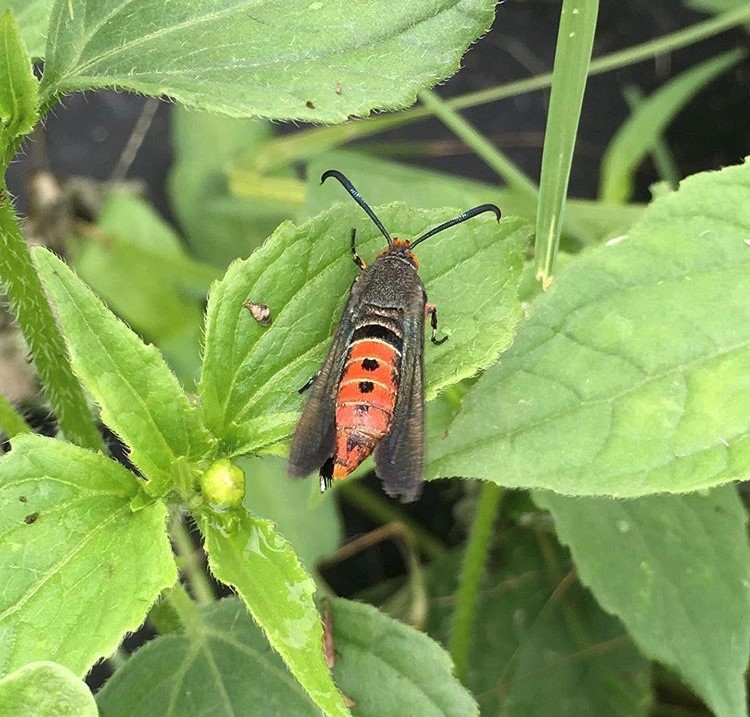In southwest Virginia we’ve seen a lot of squash vine borer problems this summer. More than usual. This moth pest lays its eggs (singly) at the base of squash or pumpkins, where the larva quickly bores into the plant after egg hatch and ultimately kills the vine or entire plant (as we’ve seen in our squash research plots in Whitethorne, VA).




Control
Squash vine borer can be a major pest challenge for growers and home gardeners. If you only have a few plants to protect, then trying to cover the base of plants with aluminum foil or the cardboard can help as the moth prefers to deposit the egg at the base of plants. This acts as an oviposition deterrent. However, this is not practical for commercial growers and the best control option is an insecticide spray directed at the base of plants where the female moth may contact it and die before laying the egg, or, after egg hatch, the young neonate larvae may die from the insecticide residue before boring into the plant, where it will be protected. Pyrethroids such as Asana XL (esfenvalerate), Baythroid XL (beta-cyfluthrin), Brigade 2EC (bifenthrin), Danitol 2.4EC (fenpropathrin), Hero EW (zeta-cypermethrin + bifenthrin), Warrior II or Lambda-Cy 1EC (lambda-cyhalothrin), Mustang Maxx (zeta-cypermethrin), Permethrin 3.2EC, Tombstone (cyfluthrin), to name a few, are the most effective insecticides for quick contact control of the SVB. As always, please read the label before using any insecticide and be mindful that pyrethroids are toxic to pollinators and other beneficial arthropods. So avoiding spraying when flowers are open and in bloom, and directing sprays to the base of plants will help reduce nontarget impacts.
